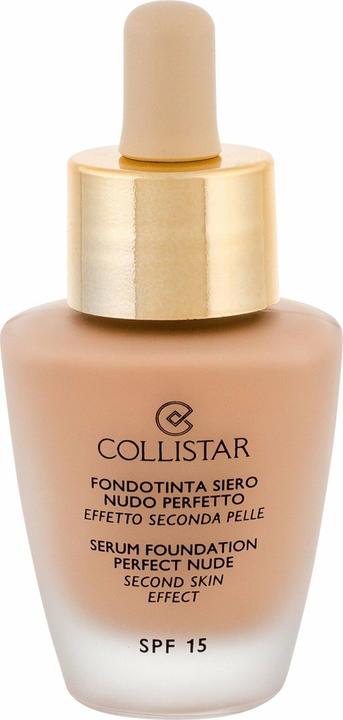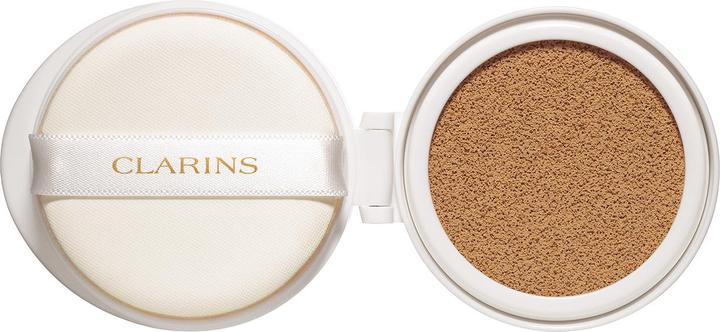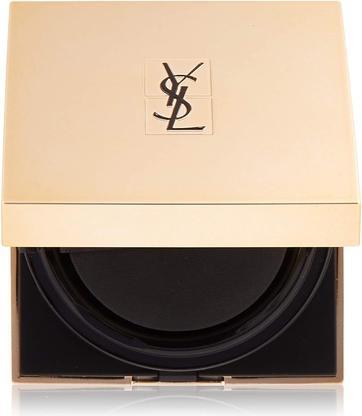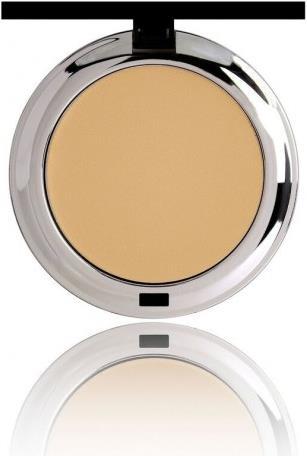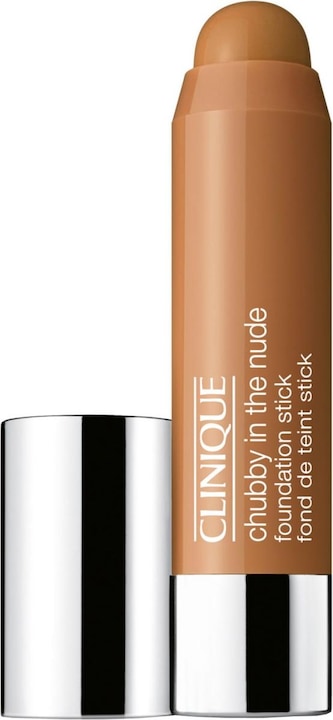

Cushion, stick and everything in between: which foundation is right for you?
Do you know what the difference is between a serum and a cushion foundation? Or how a foundation balm differs from a stick? Loads of foundation, loads of confusion. Time to change that.
What foundation should I go for? Simple question. Complicated answer. There are quite a few things to consider before settling on a foundation, for example finish, coverage, wear time and the right shade and undertone. I’ve covered these points in another article (in German) to help you in your search for the right foundation. But what I didn't mention there is that in addition to all those considerations, foundations come in different forms and consistency. This article will tell you all you need to know about that.
Liquid foundation
The classic foundation: liquid, usually comes in a bottle with a pump dispenser or in a tube. Liquid foundations are the most common kind and can be applied using a brush, hand or sponge. It’s generally quite hygienic, as the inside of the container never comes into direct contact with your skin. There are exceptions, though. Some bottles have a built-in applicator, like a spatula in the lid.
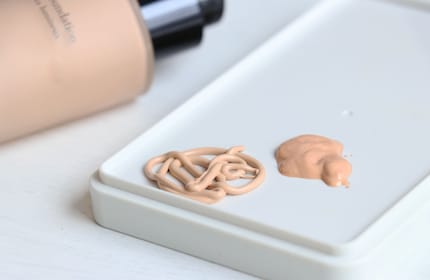
One big advantage of liquid foundations compared to solid ones is that they’re easier to spread on the face, which makes it easier to get even coverage. The rule is: the thicker the foundation, the more effort you’ll need to put into application. And if something off with liquid foundation, you can usually fix it by adding something else in. For example, if the foundation’s too matt, you can add in a few drops of liquid highlighter. If it's too thick, you can stretch it with your moisturiser. You can also mix two different foundations together to get the perfect shade or to get the best of both foundations.
Don’t forget to set the liquid or creamy foundation with a transparent powder. This helps the foundation last longer on your skin and keeps it from rubbing off when you touch your face.
Serum foundation
Serum foundations are a subcategory of liquid foundations. They have a very light, thin texture, which usually translates to light to medium coverage. You can think of it as make-up combined with skincare that moisturises your skin. Serum foundation bottles normally have a pipette for dosing. If you’re a fan of the «no-make-up» make-up look, a serum foundation is a good way to go.
Cushion foundation
Cushion foundation is nothing more than a liquid foundation that’s absorbed by a sponge which is, in turn, housed in a compact. The Korean trend that spread here is holding up surprisingly well. Probably because it allows you to reap the benefits of liquid foundation despite the hustle and bustle of everyday life – you can carry it around in your bag without fear of it spilling. The built-in mirror and small finger applicator allow you to touch up your make-up wherever you are. But I really recommend only using the finger applicator for small touch-ups on the go. At home, you'll be faster with a regular brush or make-up sponge.
The sponge in the compact also holds less foundation than a bottle or tube. So, you get less foundation for your money. In addition, the sponge may dry out over time, as it’s repeatedly exposed to the air. And because the applicator’s constantly going from your face to the sponge and back, bacteria can collect in the foundation. This, in turn, can lead to pimples.
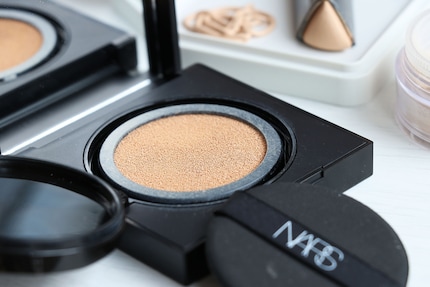
Powder foundation
Powder foundations come in two variants: pressed and loose. If you opt for a pressed powder, you can use it on the go, just like cushion foundation. But be careful: the foundation can crumble and cause a mess in your bag. Loose powders are more impractical, so it’s best to only use them at home. You usually tap some of the powder into the lid and apply it with a brush. Quite cumbersome. You also end up losing quite a bit of powder, since some of it is bound to land outside of the lid. And if you accidentally tap out too much powder, good luck getting it back in the container without making a huge mess. This really depends on the packaging, though.
Powder is especially suitable for people with oily skin. It absorbs oil, preventing your face from being shiny. Do you have drier skin? Then skip the powder. Because it’s so mattifying, it can make your skin look flat.
Unlike liquid or creamy foundations, powder foundations don’t need to be set. But there’s also a disadvantage to starting off with a powder base: liquid and cream products rarely work well on it. So, you might not be able to layer your favourite blush, bronzer or highlighter (if they’re liquid or cream products). If you still want to use them, I recommend applying them before the powder foundation. Or simply go for a powder blush, bronzer and highlighter instead.
Stick foundation
Stick foundations come – as the name suggests – in a solid stick that you can twist out of the packaging, much like a lipstick. This makes it quite travel-friendly. There’s no danger of it leaking, and it tends to be a lot lighter than the typical glass foundation bottles. Just make sure not to leave it lying out in the sun, or it’ll melt. Make-up artists can use foundation sticks in several dark and light shades for precision contouring.
But be warned: stick foundations can easily contain two thirds less foundation than the standard, 30 ml liquid bottles. And yet, they’re not any cheaper. So you’re likely to go through stick foundations much faster. When they first hit the market, stick foundations were generally made for oily skin. But by now, they come in quite a few alternatives to suit all skin types.
Since the stick is in direct contact with your face, bacteria can grow on it. If you want to make sure everything stays hygienic, you can use a clean brush to pick up some product from the stick and then work the foundation into your face that way.

Mousse foundation
Mousse foundations are a crime and should be banned.
Cute idea; lousier than lousy in real life. Their target audience is beginners, who are lured by the promise that all it takes for flawless skin is a little finger work. I say: stay away from the mousse!
Why are so many beauty junkies, myself included, at war with the mousse? Check out this article for the answer:
Foundation balm
Never heard of this? I'm not surprised. Foundation balms don't seem to have established themselves on the market yet. A foundation balm is a thick, tinted balm that comes in a jar. It’s best applied with a dense, round make-up brush.
When applying a balm, make sure to take your time. Thick textures require a little more love and dedication to work in. I also recommend it primarily for people with oily skin. On dry skin, it can easily gather on any skin flakes and accentuate them. Due to the open packaging and the direct contact between brush and foundation, the balm can quickly become a breeding ground for bacteria.
Oof. That was a flood of information. If you have any more questions about foundation, feel free to ask me in the comments. Interested in make-up 101? Check out this collection of articles:
As a massive Disney fan, I see the world through rose-tinted glasses. I worship series from the 90s and consider mermaids a religion. When I’m not dancing in glitter rain, I’m either hanging out at pyjama parties or sitting at my make-up table. P.S. I love you, bacon, garlic and onions.
Practical solutions for everyday problems with technology, household hacks and much more.
Show all


